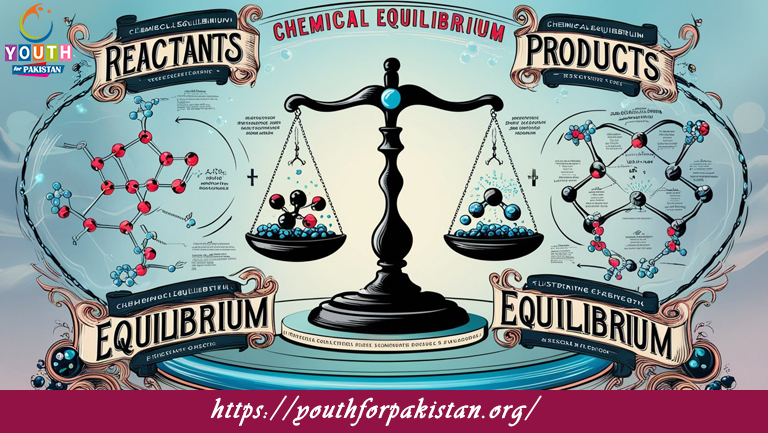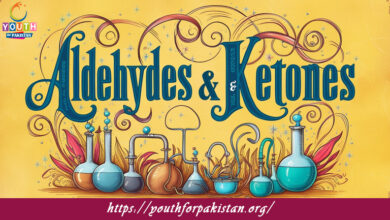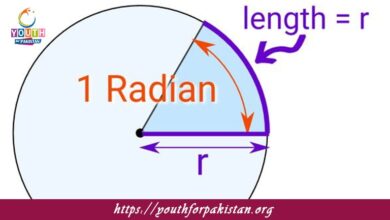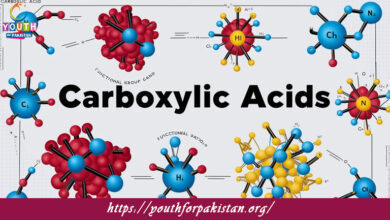Chemical Equilibrium MDCAT MCQs with Answers

Welcome to the Chemical Equilibrium MDCAT MCQs with Answers. In this post, we have shared Chemical Equilibrium Multiple Choice Questions and Answers for PMC MDCAT 2024. Each question in MDCAT Chemistry offers a chance to enhance your knowledge regarding Chemical Equilibrium MCQs in this MDCAT Online Test.
At equilibrium, the concentration of products and reactants remains constant. This is known as:
A) Le Chatelier’s Principle
B) Chemical Kinetics
C) Equilibrium Constant
D) Dynamic Equilibrium
In an exothermic reaction, how does the equilibrium shift if the temperature is increased?
A) Shifts to the right
B) Shifts to the left
C) Remains unchanged
D) Depends on the concentration of reactants
The equilibrium constant (K) of a reaction is 5. What does this indicate about the position of equilibrium?
A) Products are favored
B) Reactants are favored
C) Reaction is at equilibrium
D) The reaction is complete
If the pressure is increased for a reaction involving gases, the equilibrium will shift towards:
A) The side with more moles of gas
B) The side with fewer moles of gas
C) The side with equal moles of gas
D) The side with no moles of gas
In a reaction at equilibrium, if the concentration of reactants is increased, the equilibrium position will shift to:
A) The right
B) The left
C) Remain unchanged
D) It will depend on the reaction rate
Le Chatelier’s principle predicts that if a system at equilibrium is subjected to a change in concentration, temperature, or pressure, the system will:
A) Shift to counteract the change
B) Remain unchanged
C) Immediately return to equilibrium
D) Only shift if the concentration is changed
Which of the following is true about the equilibrium constant?
A) It changes with the change in concentration of reactants or products
B) It is temperature-dependent
C) It changes with pressure changes
D) It changes with the change in the volume of the reaction vessel
In a reaction at equilibrium, if the pressure is increased, the equilibrium will shift to:
A) The side with more moles of gas
B) The side with fewer moles of gas
C) The side with equal moles of gas
D) The side that reduces the pressure
In an equilibrium reaction, if the volume of the reaction vessel is decreased, the equilibrium will shift towards:
A) The side with more moles of gas
B) The side with fewer moles of gas
C) The side with equal moles of gas
D) No change in equilibrium position
What is the effect of adding a catalyst to an equilibrium reaction?
A) It shifts the equilibrium position towards the products
B) It shifts the equilibrium position towards the reactants
C) It increases the rate at which equilibrium is reached
D) It changes the equilibrium constant
If a system at equilibrium is compressed, the equilibrium will shift to:
A) The side with more moles of gas
B) The side with fewer moles of gas
C) The side with equal moles of gas
D) No change in equilibrium position
In a reaction at equilibrium, what happens if a substance is removed?
A) The equilibrium shifts towards the removal of the substance
B) The equilibrium shifts towards the formation of the removed substance
C) The equilibrium remains unchanged
D) The reaction will stop
If the equilibrium constant (K) is very large, the equilibrium position is:
A) Towards the reactants
B) Towards the products
C) At the midpoint
D) Incomplete
In an exothermic reaction, increasing pressure will:
A) Shift the equilibrium towards the products
B) Shift the equilibrium towards the reactants
C) Have no effect on the equilibrium
D) Increase the equilibrium constant
Which of the following does not affect the equilibrium constant?
A) Temperature
B) Concentration of reactants
C) Pressure
D) Addition of a catalyst
In a chemical equilibrium, if the volume of the container is decreased, the equilibrium will:
A) Shift to the side with more moles of gas
B) Shift to the side with fewer moles of gas
C) Remain unchanged
D) It depends on the nature of the reaction
Which of the following factors affects the position of equilibrium?
A) Temperature
B) Pressure
C) Concentration
D) All of the above
If the concentration of products is increased in an equilibrium reaction, the equilibrium will:
A) Shift to the right
B) Shift to the left
C) Remain unchanged
D) Depend on the temperature
What is the effect of adding an inert gas to a reaction at equilibrium?
A) It shifts the equilibrium position towards the products
B) It shifts the equilibrium position towards the reactants
C) It increases the total pressure but does not affect the equilibrium position
D) It decreases the total pressure and shifts the equilibrium position
If a system is at equilibrium and the volume is doubled, the equilibrium will shift towards:
A) The side with more moles of gas
B) The side with fewer moles of gas
C) The side with equal moles of gas
D) No change in equilibrium position
A) Shift the equilibrium towards the products
B) Shift the equilibrium towards the reactants
C) Have no effect on the equilibrium
D) Decrease the concentration of products
If you are interested to enhance your knowledge regarding Physics, Chemistry, Computer, and Biology please click on the link of each category, you will be redirected to dedicated website for each category.





